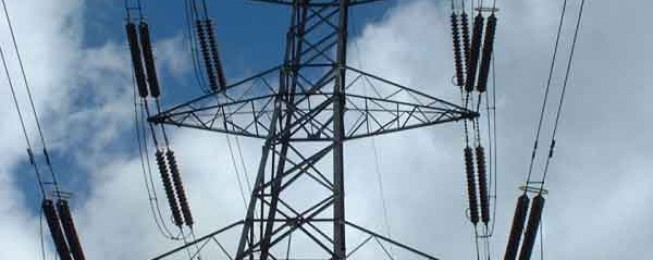 Draft Written Evidence to Scrutiny Committee of the Energy Bill
Draft Written Evidence to Scrutiny Committee of the Energy Bill
Prof Catherine Mitchell, University of Exeter. Jan 15th 2013
Introduction
The Electricity Market Reform (EMR) process, which has culminated in the Energy Bill, provided an opportunity to establish an energy system fit for the purpose of enabling Britain to move to a secure, efficient and affordable sustainable energy economy. At the moment, the Energy Bill does not do this. If it goes through as it is without substantial amendments it will represent a wasted opportunity which will have to revisited reasonably soon.
The original aim of the EMR was to encourage investment for a sustainable energy future. Investors require clear long term sector specific signals in order for them to have confidence. Non-specific mechanisms like a carbon price do not provide the type of investor confidence that is necessary.
The Energy Bill is still very high level and many details are yet to be worked out. I conclude that this is because the process has been overly rushed. The powers that the Bill give to the Secretary of State are extraordinary and I imagine this is because the Government does not know yet what will be needed to be done so they are granting the Secretary of State extensive powers so that whatever is needed can be fitted in later. This is of course sensible in some ways but it does not give investor confidence that this is an Energy Bill which has been carefully constructed to enable the much discussed policy intent.
The amendments recommended in this submission are listed below:
1. A decarbonisation target consistent with the Committee on Climate Change’s 4th Carbon Budget of 50gCO2/kWh by 2030 is essential to ensure an appropriate long term investment signal in low carbon technology. Industry itself has said that it needs long term sector specific certainty for it to feel comfortable to invest. Without such a target, there is no signal for the necessary rate of change within the sector. It is the essential requirement from which everything else flows. In parallel to this, it is vital that the Levy Control Framework works to complement the Energy Bill by clarifying expenditure up until 2030. As it stands at the moment, there is clarity until 2020 and then a cliff. Similarly, the Emissions Performance Standard must be set in line with the decarbonisation target.
2. The Government has said that it will include a chapter to enable improved energy demand reduction. This is welcome and vital. Reducing our energy demand and making our use of energy as efficient as possible should be the centre of our energy policy. The Bill should include enabling powers for energy efficiency – such as energy efficient FITs – as well as market rules for demand side response.
3. The Bill must include transitional arrangements which enable the continuation of the RO so that there is not a hiatus in renewable deployment, as the new CfD’s contracts come into being and bed down (Chapter 7). The ECC Select Committee has recommended the RO and CfDs run concurrently for 3 years but this should be flexible. It is to be remembered that the CfD FITs of the Energy Bill have been created specifically to enable support of nuclear power, with only secondary thought for renewable energy. This reality must not be allowed to undermine renewable energy development in Britain. The small scale FIT has proved to be very successful and an extension upwards from its current 5MW would be very helpful.
4. The Bill must include greater detail about the process for setting the strike price for nuclear power (Chapter 5). This must be transparent. The EMR process started before a whole series of global energy policy occurrences: the raid fall in prices of renewable energy, particularly photovoltaics; the falling prices of various materials, which should enable a whole series of new photovoltaic building materials; the tsunami and subsequent human errors at the Fukishima nuclear power plant in Japan; the development of Shale Gas around the world; the policy decisions to implement the EnergieWende in Germany and the Danish Energy Plan in Denmark which is illuminating the design and operation of energy systems along with their integration with waste, water and food systems which we can expect to spread throughout Europe. The Energy Bill as it stands does not situate itself in this reality. Only with transparency are we as a country able to know how much large scale nuclear power will be costing us and what alternative there might be to it.
5. The Bill must take notice of independent generator concerns, including small community and local authority energy service companies (ESCOs). These ESCOs have enormous potential, as yet untapped in Britain. This Bill must enable new entrants, whatever their scale, in reality, not just give platitudes of support (Chapter 6).
6. The transition to a sustainable energy future is one of great change and the energy system needs to remain resilient and robust whilst this transition is being undertaken. Clear strategic, long term sector specific investment signals need to be given – hence the need for a decarbonisation target. However, it is also necessary to ensure sufficient capacity at the right time and place. The Bill needs to walk that line between ensuring encouragement of the move to a low carbon energy system while at the same time providing suitable signals for investment. The capacity mechanism is at the nub of this debate, hence its contentiousness (Chapter 3). Without care the Bill will give too much support for capacity simply to be there – and this will provide too much support for gas – on the other hand too little encouragement will lead to security concerns. A decarbonisation target in line with the CCC’s 4th Budget and an Emission Performance Standard in line with this means that a more ‘general’ capacity mechanism could be put in place – meaning that a payment could be given for capacity – whether demand side response, storage, interconnectors etc – that is there. Without the decarbonisation target and low level EPS, then a much more ‘targeted’ capacity mechanism would be required through system operator auctions. At the moment, the Bill is neither one thing nor the other and risks too much gas, which would also bring different security concerns including that of price.
7. There are numerous technical issues related to the details of the CfDs which are as yet unknown (Chapter 2). Moreover, because of the high level nature of the Energy Bill many of the details which caused so many problems during the Consultation but which were finally agreed remain absent from the Bill – for example, the Single CfD Counterparty. The concerns of investors need to be addressed so that the agreed policy intent is reflected in the Bill.
Related Posts
« Previous Funding the Future New Thinking Blog: Book Review of the Carbon Crunch Next »







